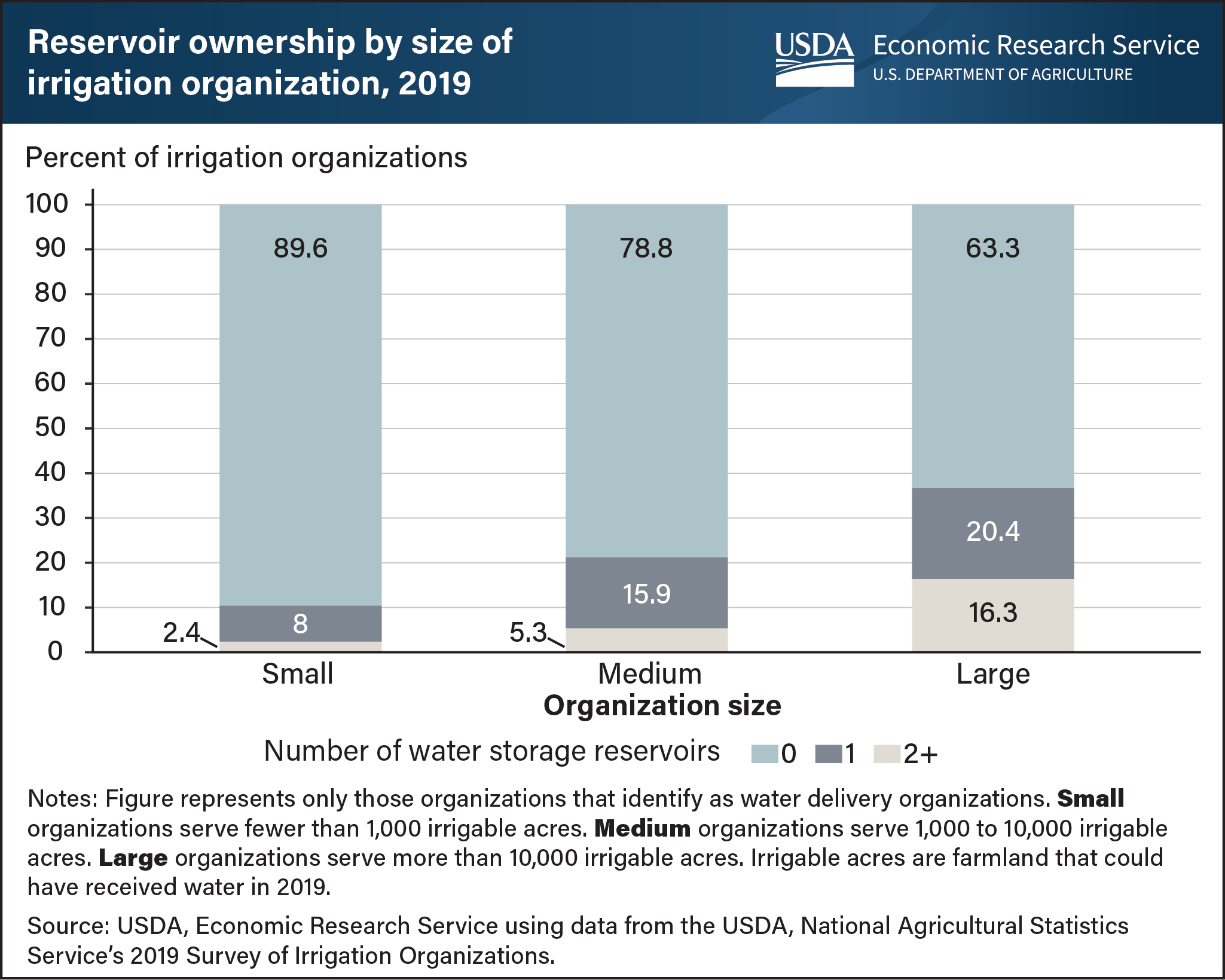Large irrigation organizations are most likely to own water storage infrastructure
- by R. Aaron Hrozencik
- 11/29/2021

Water storage infrastructure includes dams and reservoirs that provide a way to store water across seasons and years to meet the demands of irrigators. According to data collected in the USDA’s 2019 Survey of Irrigation Organizations, less than 20 percent of water delivery organizations own and manage their own water storage reservoirs. The remaining water delivery organizations rely on natural streamflow or storage infrastructure owned by State or Federal agencies or other irrigation organizations. Large irrigation organizations, defined as those organizations that serve more than 10,000 irrigable acres, are the most likely to own water storage infrastructure. Almost 37 percent of large irrigation organizations have at least one water storage reservoir. Meanwhile, 21 percent of medium organizations and 10 percent of small organizations, have at least one reservoir. Storage infrastructure is particularly important in snowpack-dependent basins where the timing of spring runoff does not align with peak irrigation water demand. The role of water storage infrastructure will be critical as snowpack decreases, snowmelt runoff shifts to earlier in the growing season, and water demand increases. This chart can be found in the USDA, Economic Research Service report Irrigation Organizations—Water Storage and Delivery Infrastructure, published October 19, 2021.


